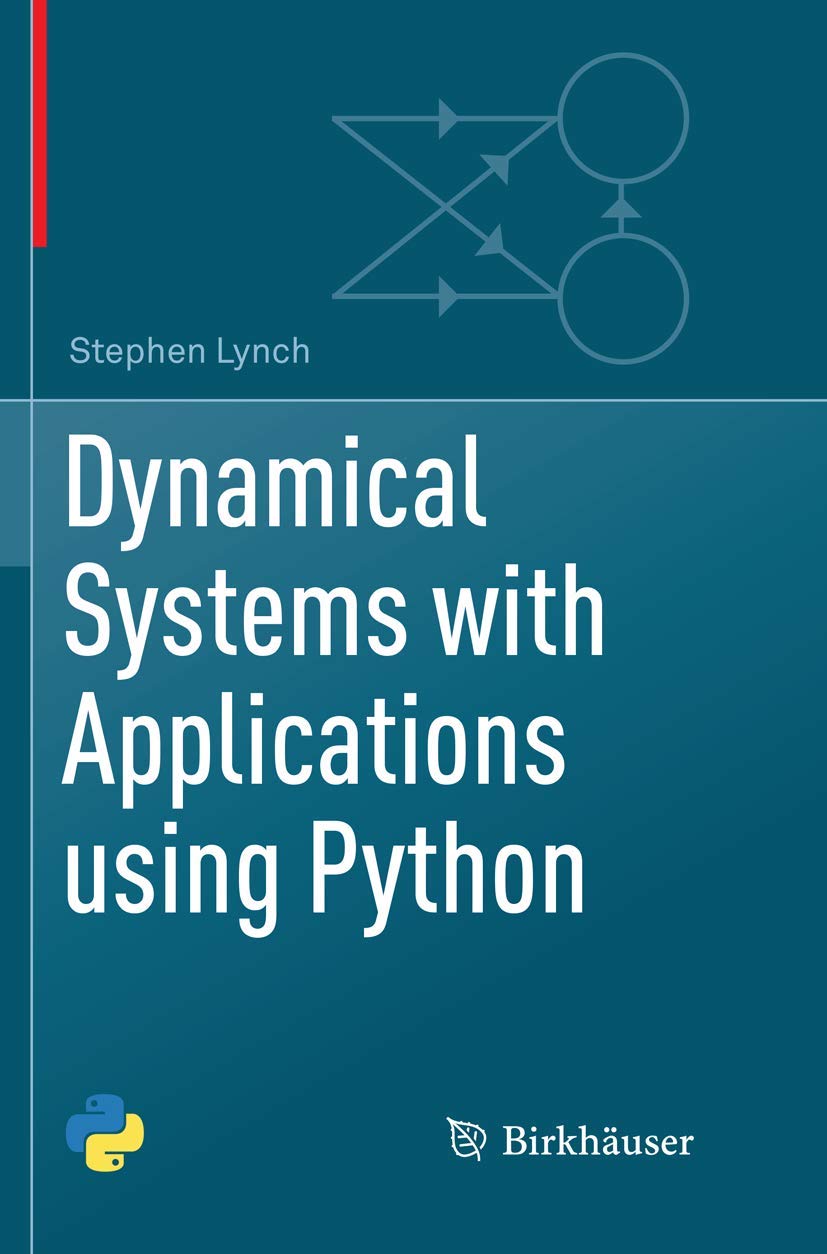Dynamical Systems With Applications Using Python
Dynamical Systems With Applications Using Python is backordered and will ship as soon as it is back in stock.
Couldn't load pickup availability
Genuine Products Guarantee
Genuine Products Guarantee
We guarantee 100% genuine products, and if proven otherwise, we will compensate you with 10 times the product's cost.
Delivery and Shipping
Delivery and Shipping
Products are generally ready for dispatch within 1 day and typically reach you in 3 to 5 days.
Book Details
-
Author: Stephen Lynch
-
Brand: Birkhauser
-
Edition: Reprint
-
Binding: Paperback
-
ISBN: 9783030086244
-
Pages: 665
-
Release Date: 08-02-2019
-
Languages: English
About The Book
Dynamical Systems with Applications Using Python by Stephen Lynch offers a comprehensive introduction to both continuous and discrete dynamical systems, utilizing Python’s powerful tools for visualization, simulation, and algorithmic computations. The book starts with an introductory tutorial on Python, equipping readers with the necessary skills to use the language for studying nonlinear dynamical systems. It progresses from basic theory to advanced topics in nonlinear ordinary differential equations, nonlinear optics, multifractals, neural networks, and binary oscillator computing.
The book is divided into two main parts:
-
Continuous Systems: This section covers ordinary and delay differential equations, providing foundational insights into continuous dynamical systems.
-
Discrete Dynamical Systems: This section moves on to discrete systems, introducing complex topics such as chaos control, synchronization, and neural networks.
The later chapters also delve into practical applications in chaos control and synchronization, along with real-world examples in neural networks and binary oscillator computing, making it an excellent resource for undergraduate student projects.
A distinctive feature of this book is the integration of Python-based exercises, coursework challenges, and exam questions designed to help readers hone their programming skills while learning the subject. With over 665 pages of content, it is an indispensable resource for advanced undergraduate and graduate students, applied mathematicians, engineers, and researchers in fields ranging from biology and chemistry to computing, economics, and physics.
The book requires some foundational knowledge in linear algebra, real and complex analysis, calculus, and ordinary differential equations. Familiarity with a programming language such as C or Java is beneficial but not mandatory.





